Άγγελος
Επιφανές μέλος


ο προεδρος της ESA Jean-Jacques DordainThis would leave Europe – whose own unmanned ATV cargo capsules provide supplies for the space station – without a role in running the station. "Nasa asked us to start discussions with them about alternative plans and we agreed the best idea was for us to become involved in its new spaceship which is intended to take astronauts beyond the space station and into deep space on exploration missions," said Dordain. "Under the plan, we would build the service module that contains the capsule's propulsion, attitude and guidance systems while the Americans would build the part that carries the astronauts."
At present, the project would not guarantee Europe one of the four astronaut places on Orion when it is launched. However, Dordain indicated that he expected Europe would be given places on future Orion deep space missions. One of those could go to Peake.
"The first two test flights of the new spaceship would take place around 2017," he said. "These would use existing Atlas V launchers. After that, a bigger rocket will be needed to take spaceships with full payloads into deep space. That launcher is still being developed and we have already held discussions with Nasa with the aim of co-operating with them in working on this new launcher as well."
In this way, Europe would be involved both in the building of rocket launchers for manned missions and the capsules that will carry the astronauts. However, the proposal has to be agreed at the meeting of ministers of Esa members states in Naples this week.
"Britain has already indicated support," said Dordain. "Indeed, the only other main contributor to Esa's budget currently opposing the plan is France. However, I am hoping this is a negotiating ploy to win arguments over other issues at the ministerial meeting."
Dordain, who has led the European Space Agency since 2003, believes that no single nation can now afford to carry out manned space exploration on its own. The future lies with international co-operation like that proposed between the US and Europe.
εβγαλε ειδηση
οτι περα απο την συμμετοχη της ευρωπης στην παραγωγη του οχηματος της Νασα Οrion
γινονται συζητησεις για συμμετοχη και στον Space launch system τον τεραστιο πυραυλο για διαπλανητικες πτησεις κλπ,,τον τεραστιο ασπρο πυραυλο απο πανω που εβαλα..
λεει ακομα και για συνεργασιες με του κινεζους κλπ
το μελλον ειναι διεθνες πια..καμια χωρα δεν μπορει να παρει μονη της τη δοξα και τον Νεο κοσμο περα απο την ταπεινη Γη μας..

Σημείωση: Το μήνυμα αυτό γράφτηκε 12 χρόνια πριν. Ο συντάκτης του πιθανόν να έχει αλλάξει απόψεις έκτοτε.
Άγγελος
Επιφανές μέλος


με γυμνα ματια δεν θα φαινεται κατι ιδιαιτερο δυστυχως..The near-Earth asteroid 4179 Toutatis, which is about 3 miles (5 kilometers) wide, will zoom within 4.3 million miles (7 million kilometers) of Earth during its closest approach early Wednesday morning (Dec. 12). That's too far away to pose any impact threat on this pass, but close enough to put on a pretty good show through top-notch telescopes, researchers say.
The Minor Planet Center in Cambridge, Mass., lists Toutatis as a potentially hazardous object, meaning that it could pose a threat to our planet at some point in the future. The current flyby is no cause for concern, however. At its closest approach, which comes at 1:40 a.m. (0640 GMT) Wednesday, Toutatis will still be 18 times farther away from Earth than the moon is.
Toutatis would cause catastrophic damage if it ever did slam into Earth. In general, scientists think a strike by anything at least 0.6 miles (1 km) wide could have global consequences, most likely by altering the world's climate for many years to come.
For comparison, the asteroid thought to have wiped out the dinosaurs 65 million years ago was an estimated 6 miles (10 km) across.
αλλα καλυτερα που δεν ηρθε κοντυτερα για να τον καλοδούμε

και μιαφοβερη αλλα παλια ειδηση του οκτωβρη που μου ξεφυγε
Earth-sized planet found orbiting Alpha Centauri, our astronomical 'backyard'
Discovery of nearest planet yet found outside solar system suggests such bodies are commonplace in Milky Way
- Ian Sample, science correspondent
- The Guardian, Wednesday 17 October 2012 17.12 BST
Alpha Centauri is the nearest star to Earth. It appears to the naked eye as one body but is actually a trio, two of which are similar to our sun. Photograph: EPA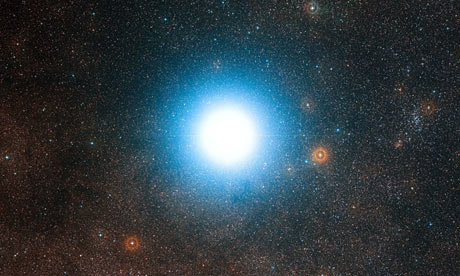
The faintest wobble of one of our nearest stars has revealed the presence of a planet the size of Earth, the closest yet found outside the solar system.
Scientists discovered the new planet in the Alpha Centauri system – the nearest trio of stars to Earth – from the telltale push and pull it exerted on one of the stars as the huge rock swung around on its orbit.
The unnamed planet is the lightest astronomers have yet spotted around a star that resembles our own sun, and increases the likelihood that rocky planets are ubiquitous in the galaxy.
At a distance of only six million kilometres from its parent star – closer than Mercury is to the sun – the planet is bathed in unbearable heat. Surface temperatures are thought to reach 1,500C, enough to transform its rocky features into molten lava. Its tight orbit means a year passes in only 3.2 Earth days.
The discovery, if confirmed by further observations, suggests that rocky planets are commonplace in the Milky Way. That raises the chances that astronomers might spot a habitable world in the "Goldilocks zone" around a star, where conditions are neither too hot nor too cold for water to flow freely – a prerequisite for life as we know it.
"This is the first planet with a mass similar to Earth ever found around a star like the sun. Its orbit is very close to its star and it must be much too hot for life as we know it, but it may well be just one planet in a system of several," said Stéphane Udry at the Geneva Observatory in Switzerland.
Others also embraced the discovery as a sign that Alpha Centauri was home to more planets. "The prospects are excellent for finding further planets in this system. Everything we know indicates that when you find one planet like this you're very likely to find additional planets further out, so it's very exciting in terms of looking forward to further detection," said Greg Laughlin, an astronomer at the University of California at Santa Cruz. "Alpha Centauri is our closest neighbour. This is our backyard, and to find out that planet formation is occurring there is just extraordinary."
Alpha Centauri is one of the brightest objects in the night sky and lies only 4.3 light years from Earth. It appears as one star to the naked eye, but is actually a pair called Alpha Centauri A and B, which are similar to the sun. A red dwarf star closer to Earth called Proxima Centauri completes the trio.
Astronomers at the European Southern Observatory (ESO) detected the new planet around Alpha Centauri B after spotting minuscule changes in the star's position. The planet pulls the star backwards as it passes behind, and forwards as it moves in front. The cosmic dance causes light from the star to appear more blue as it advances, and more red as it recedes.
Writing in the journal Nature the team describe how they used the High Accuracy Radial Velocity Planet Searcher (Harps) instrument on ESO's 3.6 metre telescope at La Silla in Chile to reveal the planet's presence. As the planet moved on its orbit, it pulled the star around by no more than 51cm per second. No other group has achieved such a sensitive measurement.
Xavier Dumusque, a member of the team from the Geneva Observatory, said the discovery marked "a major step towards the detection of a twin Earth in the immediate vicinity of the sun". Astronomers hope to look for life on other worlds by analysing starlight as it passes through a planet's atmosphere. This could reveal waste gases, such as methane, that are expelled by living organisms.
The same team confirmed the first "extra-solar planet" around a sun-like star in 1995. Since then, the number of planets spotted beyond our solar system has soared to more than 800. Most are enormous Jupiter-sized planets, which are easier to spot as they pull on their stars, or cross their faces, causing the starlight to dim slightly.
The astronomers told a press briefing that the chance of their discovery being false was about one in 1,000, but in an accompanying article, Artie Hatzes, a researcher at the Thuringian State Observatory in Germany, said more observations were crucial to confirm the planet's existence. Hatzes cites the US astronomer Carl Sagan's warning that "extraordinary claims require extraordinary evidence". He goes on to write: "Although a planet-like signal is present in the data, the discovery does not quite provide the 'extraordinary evidence'."
The European team hopes to spot the new planet again as it crosses the face of its star.
Don Pollacco, a planet hunter at Warwick University, described the work as beautiful. He told the Guardian: "This tells us rocky planets are everywhere. We just have to look for them. The implication is there are a lot of planets in the galaxy, a huge number."
Alpha Centauri is too far away for a space mission to visit, but Laughlin told reporters that if a habitable planet were discovered in our nearest star system it might spur work on more advanced propulsion systems that could send a probe there in "the period of a lifetime".
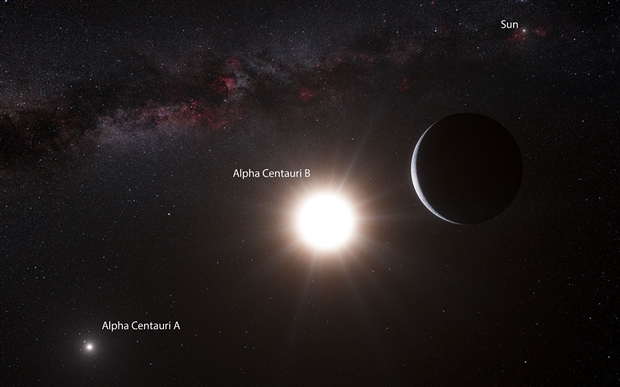
4,3 ετη φωτος απο εμας,,αν βρεθει και κατοικήσιμος πλανητης,μια ρομποτικη απσοτολη ισως να ξεκινησει.

Alpha Centauri mission by 2100? Make it so, experts say
και στο αβαταρ εκει ηταν ο πλανητης πανδωρα αλλωστε..κατι ηξερε ο καμερον και δεν μας το ελεγε..

Σημείωση: Το μήνυμα αυτό γράφτηκε 12 χρόνια πριν. Ο συντάκτης του πιθανόν να έχει αλλάξει απόψεις έκτοτε.
Άγγελος
Επιφανές μέλος


βρηκαν πιθανον κατοικησιμους πλανητες στα 12 ετη φωτος μακρια..tau cetiTau Ceti, one of our closest stars, is a good candidate for hosting an Earth-like planet, astronomers reported on Wednesday.
Located a relatively close 12 light years away, the Sun-like star has five planets that orbit it in a balmy zone which gives the best chance for nurturing life, they said.
One of the planets has a mass about five times that of the Earth, making it the smallest planet found so far in this vital zone, they said.
Around 800 exoplanets -- worlds orbiting stars other than our own -- have been spotted since 1995.
But none is a home from home. These planets are either uninhabitable gas giants or are big rocky worlds that swing so close to their star that they are literally roasted.
The quest is to find a rocky planet that is not only close to the mass of Earth but is also located in the so-called "Goldilocks zone".
This is an orbital distance from the star where temperature is neither too hot nor too cold, but just right to sustain liquid water, which is essential for life as we know it.
The Tau Ceti finding was made by astronomers from Australia, Britain, Chile and the United States, who applied a new technique to filter data from more than 6,000 observations.
By doing so, they believe they rooted out distorting signals, called "noise", that masked the existence of low-mass planets.
They applied the technique to light from Tau Ceti, where they determine it is not a lone star but in fact one with a planetary system, they said.
"This discovery is in keeping with our emerging view that virtually every star has planets, and that the galaxy must have many such potentially habitable Earth-sized planets," said Steve Vogt, a veteran exoplanet-hunter.
"We are now beginning to understand that Nature seems to overwhelmingly prefer systems that have multiple planets with orbits of less than one hundred days," he said in a press release published by Britain's University of Hertfordshire.
"This is quite unlike our own solar system where there is nothing with an orbit inside that of Mercury. So our solar system is, in some sense, a bit of a freak and not the most typical kind of system that Nature cooks up."
On October 17, European astronomers reported they had detected a planet with about the mass of Earth orbiting Alpha Centauri B, which is only 4.3 light years away.
However, the planet itself is not "another Earth" as it is not in the Goldilocks zone. It zips around the star at a scorchingly close distance, and liquid water could not exist there.
ε,οχι και 4 του αλφα κενταυρου,, αλλα κοντα

Ένας εν δυνάμει κατοικήσιμος πλανήτης ανακαλύφθηκε στο άστρο Tau Ceti
Οι αστρονόμοι ανακάλυψαν ταυτοχρόνως πέντε πλανήτες, μεταξύ των οποίων και ένας εν δυνάμει κατοικήσιμος στο διάσημο αστέρι Tau Ceti, όπου οι επιστήμονες ήδη πριν από μισό αιώνα αναζητούσαν ίχνη εξωγήινων πολιτισμών, αναφέρεται σε άρθρο, που δημοσιεύθηκε στο περιοδικό Astronomy & Astrophysics.
Το αστέρι Tau Ceti, που ανήκει στον αστερισμό Ceti (HD 10700) βρίσκεται σε απόσταση 11,9 ετών φωτός από τη Γη και μοιάζει πολύ ως προς τις παραμέτρους του με τον Ήλιο. Οι επιστήμονες εντόπισαν μαρτυρίες ύπαρξης πλανητικού συστήματος γύρω από το αστέρι αυτό.
Πέραν αυτού ένας από τους πλανήτες του Tau Ceti, η περιστροφή του οποίου διαρκεί 168 ημέρες και το βάρος του είναι 4,3 γήινα βάρη, βρέθηκε στη λεγόμενη «ζώνη της ζωής», περιοχή, όπου υπάρχουν οι προϋποθέσεις για την ύπαρξη ζωντανών οργανισμών.
Σημείωση: Το μήνυμα αυτό γράφτηκε 12 χρόνια πριν. Ο συντάκτης του πιθανόν να έχει αλλάξει απόψεις έκτοτε.
Rempeskes
Επιφανές μέλος


βρίσκεται σε απόσταση 11,9 ετών φωτός
ουφ παλι καλα, εαν ηταν 12 ετη φωτος,
θα αγχωνομουν πως να φτάσουμε

Σημείωση: Το μήνυμα αυτό γράφτηκε 12 χρόνια πριν. Ο συντάκτης του πιθανόν να έχει αλλάξει απόψεις έκτοτε.
Άγγελος
Επιφανές μέλος


ε,,κατεβαινεις και πας το 1 ετος φωτος με τα ποδια..ουφ παλι καλα, εαν ηταν 12 ετη φωτος,
θα αγχωνομουν πως θα φτάσουμε

αμα εχεις φτασει..
Σημείωση: Το μήνυμα αυτό γράφτηκε 12 χρόνια πριν. Ο συντάκτης του πιθανόν να έχει αλλάξει απόψεις έκτοτε.
parafernalia
Περιβόητο μέλος



Αφού επιβιώσαμε από το τέλος του κόσμου έρχεται ένα νέο σενάριο καταστροφής να ταράξει την ηρεμία του πλανήτη. Όπως αποκάλυψε ο Υπουργός Άμυνας της Βρετανίας Λίαμ Φοξ, επικαλούμενος στοιχεία της NASA, μέσα στο 2013 αναμένεται μία ηλιακή καταιγίδα τόσο ισχυρή ώστε θα «παραλύσει» τον πλανήτη Γη. Τα τελευταία χρόνια η ηλιακή δραστηριότητα βρίσκεται σε ύφεση, όμως με το νέο έτος θα ξεκινήσει ένας καινούριος κύκλος δραστηριότητας που θα περιλαμβάνει έντονες ηλιακές εκρήξεις, εκτοξεύοντας στο Διάστημα γιγαντιαίες ποσότητες φορτισμένων σωματιδίων και ηλεκτρομαγνητικής ακτινοβολίας.
Αυτές οι επονομαζόμενες «ηλιακές καταιγίδες» θα χτυπήσουν με πρωτοφανή σφοδρότητα τη Γη σύμφωνα με τους επιστήμονες, οι οποίοι σημειώνουν ότι θα είναι η πλέον σφοδρή ηλιακή καταιγίδα που έχει βιώσει ο πλανήτης μας τα τελευταία 145 χρόνια.
Το αποτέλεσμα θα είναι να τεθούν εκτός λειτουργίας όλοι οι τηλεπικοινωνιακοί δορυφόροι που βρίσκονται σε τροχιά γύρω από τον πλανήτη και να «πέσουν» τα παγκόσμια ηλεκτρικά δίκτυα. Με απλά λόγια ο πλανήτης θα υποστεί ένα τηλεπικοινωνιακό και ενεργειακό μπλακάουτ για πολλές ώρες, ενώ οι συνέπειές του θα είναι ορατές για πολλές ημέρες ή ακόμη και μήνες μετά το συμβάν. Σοβαρά προβλήματα θα υπάρξουν επίσης στις αερομεταφορές, στα νοσοκομεία αλλά και στα τραπεζικά συστήματα.
Όπως εξηγεί η NASA, μια ισχυρή ηλιακή καταιγίδα έχει ισχύ ανάλογη με 100 βόμβες υδρογόνου και απελευθερώνει ενέργεια 1 εκατομμύριο φορές μεγαλύτερη από έναν σεισμό 9-10 βαθμών της κλίμακας Ρίχτερ.
Σημείωση: Το μήνυμα αυτό γράφτηκε 12 χρόνια πριν. Ο συντάκτης του πιθανόν να έχει αλλάξει απόψεις έκτοτε.
Άγγελος
Επιφανές μέλος


δεν πειθομαι και πολυοτι κατι τοσο σοβαρο ειναι σιγουρο οτι θα γινει το 13
αλλακαι να γινει,οκ,,θα ειναι ηλεκτρικο θεμα,,τους ζωντες οργανισμους δεν θα τουςεπηρεασει..
ενδιαφερον παντως..
επιτελους λετε να δουμεμια πραγματικη καταστροφη?

Σημείωση: Το μήνυμα αυτό γράφτηκε 12 χρόνια πριν. Ο συντάκτης του πιθανόν να έχει αλλάξει απόψεις έκτοτε.


απο οτι βλεπω σε διαστημικασαιτ
δεν πειθομαι και πολυοτι κατι τοσο σοβαρο ειναι σιγουρο οτι θα γινει το 13
αλλακαι να γινει,οκ,,θα ειναι ηλεκτρικο θεμα,,τους ζωντες οργανισμους δεν θα τουςεπηρεασει..
ενδιαφερον παντως..
επιτελους λετε να δουμεμια πραγματικη καταστροφη?
Δεν νομίζω,από πού την πήρες την είδηση;Ο Ήλιος έχει κύκλο 11-12ετούς δραστηριότητας,δεν διάβασα τίποτα ιδιαίτερο για το 2013.Και μάλιστα νμζ διάβαζα στο site της NASA ότι δεν θα υπάρξει κάποια ασυνήθιστη διεργασία στον ήλιο.
Σημείωση: Το μήνυμα αυτό γράφτηκε 12 χρόνια πριν. Ο συντάκτης του πιθανόν να έχει αλλάξει απόψεις έκτοτε.
parafernalia
Περιβόητο μέλος


Δεν νομίζω,από πού την πήρες την είδηση;
https://www.channel4.com/news/articl...aposthreatapos+from+solar+flares/3770782.html
https://www.dailymail.co.uk/sciencetech/article-1313858/Solar-flare-paralyse-Earth-2013.html
Keywords: Liam Fox NASA
Σημείωση: Το μήνυμα αυτό γράφτηκε 12 χρόνια πριν. Ο συντάκτης του πιθανόν να έχει αλλάξει απόψεις έκτοτε.
Άγγελος
Επιφανές μέλος


ακριβως αυτοΔεν νομίζω,από πού την πήρες την είδηση;Ο Ήλιος έχει κύκλο 11-12ετούς δραστηριότητας,δεν διάβασα τίποτα ιδιαίτερο για το 2013.Και μάλιστα νμζ διάβαζα στο site της NASA ότι δεν θα υπάρξει κάποια ασυνήθιστη διεργασία στον ήλιο
ετσι ειχα καταλαβει και γω,,

Σημείωση: Το μήνυμα αυτό γράφτηκε 12 χρόνια πριν. Ο συντάκτης του πιθανόν να έχει αλλάξει απόψεις έκτοτε.
DrStrangelove
Περιβόητο μέλος


Και μάλιστα νμζ διάβαζα στο site της NASA ότι δεν θα υπάρξει κάποια ασυνήθιστη διεργασία στον ήλιο.
Οι ασυνήθιστες διεργασίες είναι στη γη. Ποιός τον χέζει τον 'Ηλιο.
Σημείωση: Το μήνυμα αυτό γράφτηκε 12 χρόνια πριν. Ο συντάκτης του πιθανόν να έχει αλλάξει απόψεις έκτοτε.
Άγγελος
Επιφανές μέλος


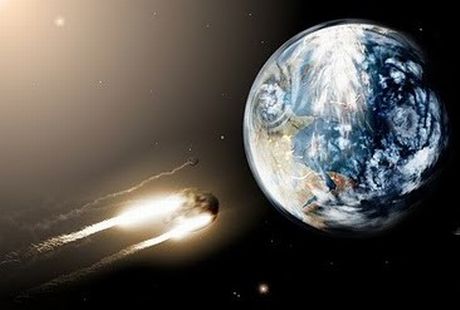
inShare
 Text
Text


Νέοι υπολογισμοί δείχνουν ότι ο επικίνδυνος αστεροειδής Άποφις, δεν θα πέσει στη Γη ούτε το 2029, ούτε το 2036
news247 Ιανουάριος 11 2013 11:57
Οι νέοι υπολογισμοί που έγιναν από τους αστρονόμους της NASA, μετά το προχθεσινό πέρασμα του δυνητικά επικίνδυνου αστεροειδούς Άποφι από τη γειτονιά της Γης, ουσιαστικά εκμηδενίζουν πλέον τις πιθανότητες να πέσει πάνω στον πλανήτη μας το 2036, καθώς είναι μικρότερες από μία στο εκατομμύριο.
"Η πιθανότητα πρόσκρουσης, σύμφωνα με τα έως τώρα δεδομένα, είναι μικρότερη από μία στο εκατομμύριο, συνεπώς μπορούμε με ασφάλεια να αποκλείσουμε την περίπτωση να πέσει στη Γη το 2036. Το ενδιαφέρον μας πλέον για τον αστεροειδή Άποφι είναι ουσιαστικά επιστημονικό για το προβλεπόμενο μέλλον", δήλωσε ο Ντον Γιέομανς της NASA, ο οποίος είναι υπεύθυνος του ειδικού γραφείου για την παρακολούθηση των διαστημικών σωμάτων που θα μπορούσαν να αποτελέσουν απειλή για τον πλανήτη μας (Near-Earth Object Program Office).
Ο Άποφις, που έχει το μέγεθος περίπου τριάμισι ποδοσφαιρικών γηπέδων, ανακαλύφθηκε το 2004 και έγινε διάσημος, επειδή οι αρχικές εκτιμήσεις ήταν ότι υπάρχει μία όχι αμελητέα πιθανότητα (2,7%) να πέσει στη Γη στις 13 Απριλίου 2029, όταν θα πλησιάσει μόλις στα 31.220 χιλιόμετρα, πιο κοντά και από τους γεωστατικούς δορυφόρους που κινούνται σε ύψος 36.000 χλμ. Επόμενες μετρήσεις, όμως, ουσιαστικά απέκλεισαν αυτή την πιθανότητα, αλλά άφησαν ανοιχτό το ενδεχόμενο πρόσκρουσης για τις 13 Απριλίου 2036 - κάτι που πλέον επίσης έρχονται να αποκλείσουν οι νέες καθησυχαστικές μετρήσεις.
Η Ευρωπαϊκή Υπηρεσία Διαστήματος (ESA) έκανε προχθές νέες παρατηρήσεις του Άποφι με τη βοήθεια του διαστημικού τηλεσκοπίου «Χέρσελ» και ανακοίνωσε ότι ο αστεροειδής είναι περίπου 20% μεγαλύτερος από τις έως τώρα εκτιμήσεις (325 μέτρα αντί 270). Έχει επίσης 75% μεγαλύτερη μάζα σε σχέση με τους προηγούμενους υπολογισμούς. Ακόμα κι αν ποτέ ο Άποφις (που φέρει το όνομα ενός ερπετοειδούς θεού της αρχαίας Αιγύπτου) έπεφτε στη Γη, εκτιμάται ότι θα προκαλούσε εκτεταμένες καταστροφές, αλλά όχι σε βαθμό να εξαφανιστεί ο ανθρώπινος πολιτισμός.
Ένας άλλος μικρότερος και λιγότερο γνωστός αστεροειδής, ο 2012 DA14, διαμέτρου 40 μέτρων, αναμένεται να περάσει ακόμα πιο κοντά από τη Γη, στα μέσα του επόμενου μηνός, από ό,τι ο Άποφις το 2029, αλλά και σε αυτή την περίπτωση δεν συντρέχει κίνδυνος, σύμφωνα με τους αστρονόμους που έχουν υπολογίσει την τροχιά του.
δεν μας λυπαται ο αποφις,


Σημείωση: Το μήνυμα αυτό γράφτηκε 12 χρόνια πριν. Ο συντάκτης του πιθανόν να έχει αλλάξει απόψεις έκτοτε.
Άγγελος
Επιφανές μέλος


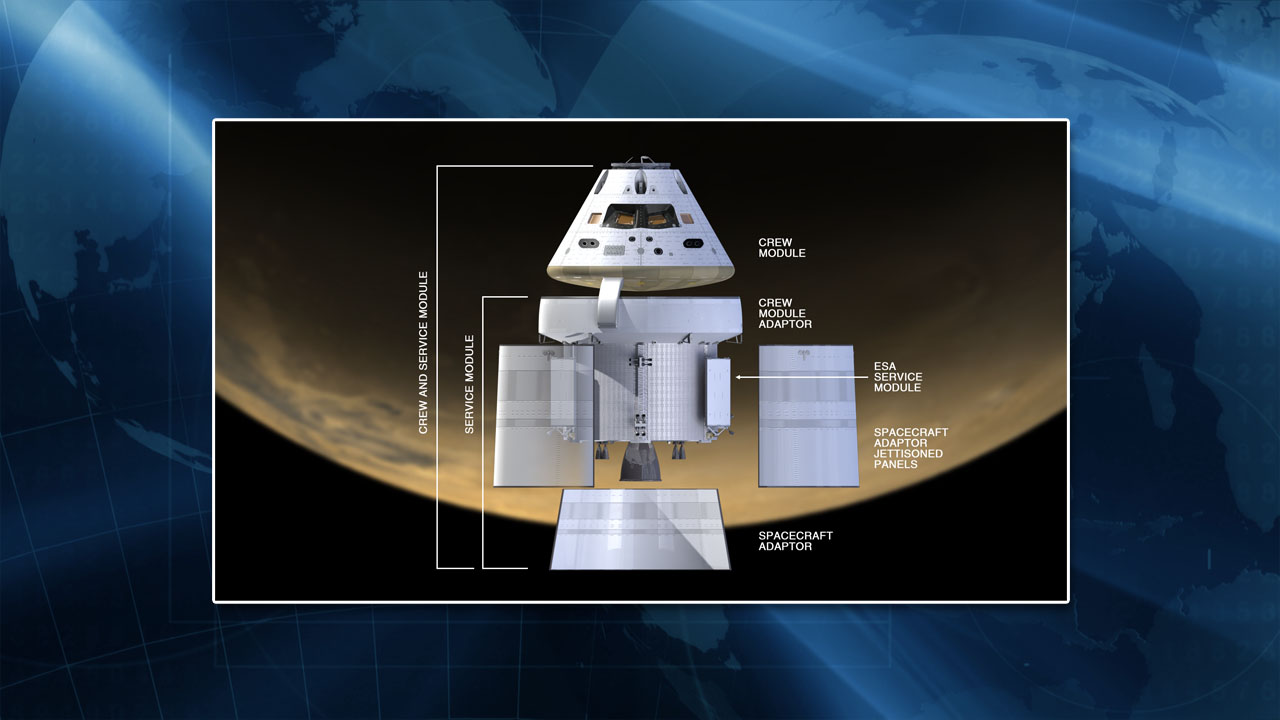
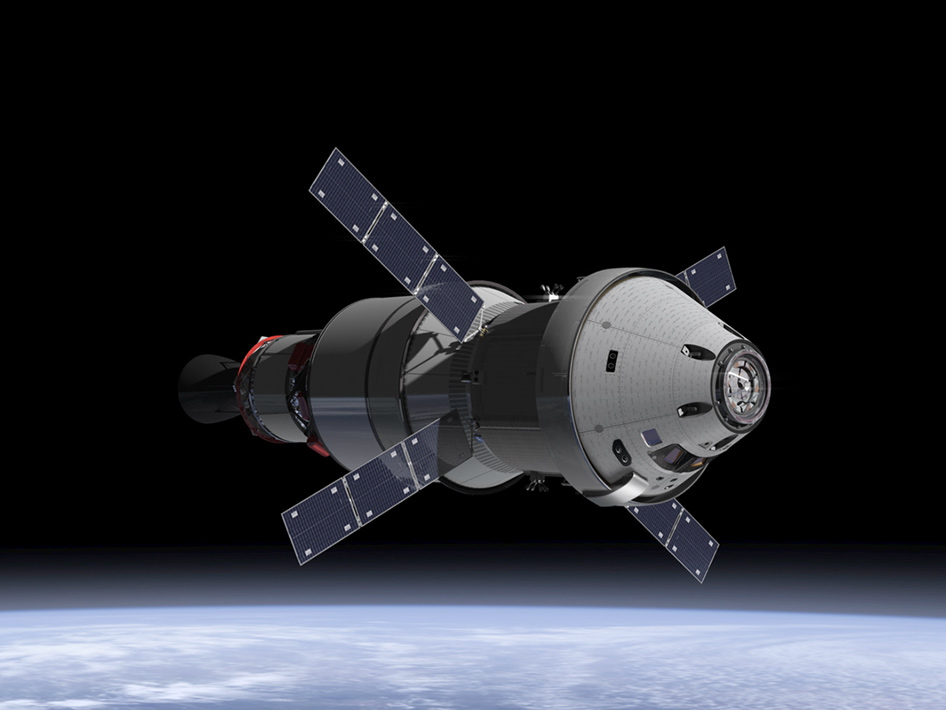
NASA Signs Agreement for a European-Provided Orion Service Module
ευρωαμερικανικη συμπαραγωγη του Οριον..ενδιαφερον..
η επισημη ανακοινωση..
Σημείωση: Το μήνυμα αυτό γράφτηκε 12 χρόνια πριν. Ο συντάκτης του πιθανόν να έχει αλλάξει απόψεις έκτοτε.
parafernalia
Περιβόητο μέλος



https://rbth.gr/articles/2012/04/16/giati_oi_rosoi_ksanapane_sto_feggari_15038.html
Σημείωση: Το μήνυμα αυτό γράφτηκε 12 χρόνια πριν. Ο συντάκτης του πιθανόν να έχει αλλάξει απόψεις έκτοτε.
Άγγελος
Επιφανές μέλος


κουφο,,λες να ειναι αυθεντικο?
στο φεγγαρι πανε ολοι γιατι απλα εχει ψωμι και χρησιμοτητα περισσοτερο ισιως απο οσο φανταζομαστε τωρα
και τοτε απλα ειδαμε μερικα στρεματα εκταση και ξυσαμε την επιφανεια στις πιο αδιαφορες επιπεδες περιοχες..
ειναι σαν να ερθει καποιος στη γη παει σε μερικα μερη στην σιβηρια πχ δει και φυγει..
Σημείωση: Το μήνυμα αυτό γράφτηκε 12 χρόνια πριν. Ο συντάκτης του πιθανόν να έχει αλλάξει απόψεις έκτοτε.
Άγγελος
Επιφανές μέλος


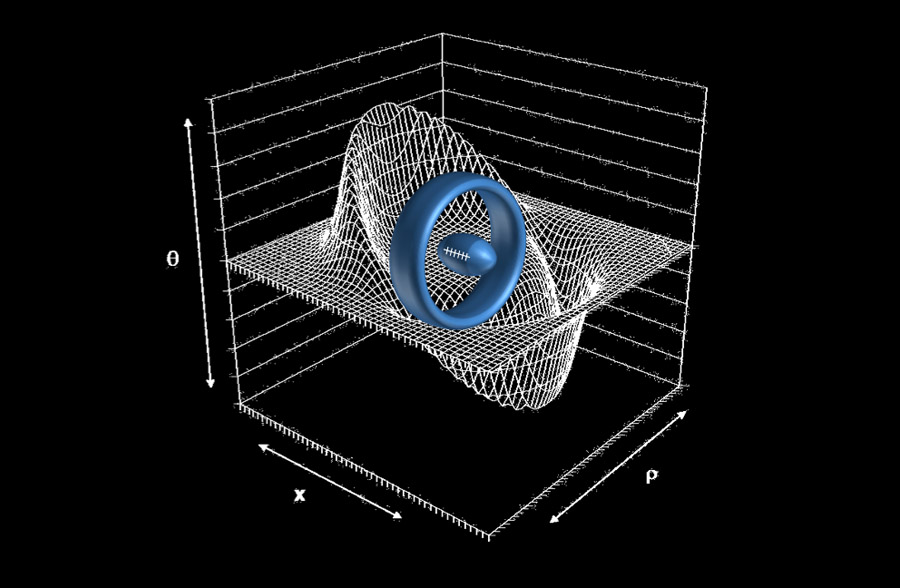
Warping space-time
An Alcubierre warp drive would involve a football-shape spacecraft attached to a large ring encircling it. This ring, potentially made of exotic matter, would cause space-time to warp around the starship, creating a region of contracted space in front of it and expanded space behind. [Star Trek's Warp Drive: Are We There Yet? | Video]
Meanwhile, the starship itself would stay inside a bubble of flat space-time that wasn't being warped at all.
"Everything within space is restricted by the speed of light," explained Richard Obousy, president of Icarus Interstellar, a non-profit group of scientists and engineers devoted to pursuing interstellar spaceflight. "But the really cool thing is space-time, the fabric of space, is not limited by the speed of light."
With this concept, the spacecraft would be able to achieve an effective speed of about 10 times the speed of light, all without breaking the cosmic speed limit.
The only problem is, previous studies estimated the warp drive would require a minimum amount of energy about equal to the mass-energy of the planet Jupiter.
But recently White calculated what would happen if the shape of the ring encircling the spacecraft was adjusted into more of a rounded donut, as opposed to a flat ring. He found in that case, the warp drive could be powered by a mass about the size of a spacecraft like the Voyager 1 probe NASA launched in 1977.
Furthermore, if the intensity of the space warps can be oscillated over time, the energy required is reduced even more, White found.
"The findings I presented today change it from impractical to plausible and worth further investigation," White told SPACE.com. "The additional energy reduction realized by oscillating the bubble intensity is an interesting conjecture that we will enjoy looking at in the lab."
βρε μπας?
ειναι δυνατον?

https://io9.com/5963263/how-nasa-will-build-its-very-first-warp-drive
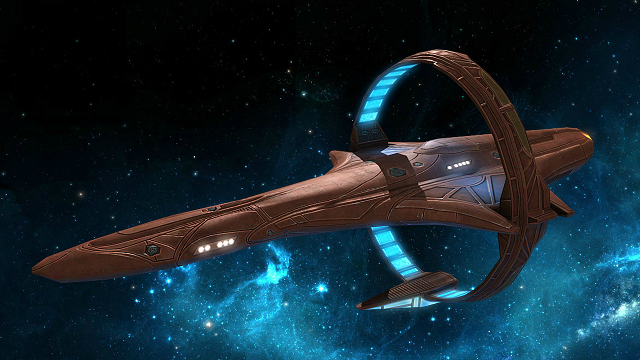
A new design
In October of last year, White was preparing for a talk he was to give for the kickoff to the 100 Year Starship project in Orlando, Florida. As he was pulling together his overview on space warp, he performed a sensitivity analysis for the field equations, more out of curiosity than anything else.
Full size
"My early results suggested I had discovered something that was in the math all along," he recalled. "I suddenly realized that if you made the thickness of the negative vacuum energy ring larger — like shifting from a belt shape to a donut shape — and oscillate the warp bubble, you can greatly reduce the energy required — perhaps making the idea plausible." White had adjusted the shape of Alcubierre's ring which surrounded the spheroid from something that was a flat halo to something that was thicker and curvier.
He presented the results of his Alcubierre Drive rethink a year later at the 100 Year Starship conference in Atlanta where he highlighted his new optimization approaches — a new design that could significantly reduce the amount of exotic matter required. And in fact, White says that the warp drive could be powered by a mass that's even less than that of the Voyager 1 spacecraft.
That's a significant change in calculations to say the least. The reduction in mass from a Jupiter-sized planet to an object that weighs a mere 1,600 pounds has completely reset White's sense of plausibility — and NASA's.
Hitting the lab
Theoretical plausibility is all fine and well, of course. What White needs now is a real-world proof-of-concept. So he's hit the lab and begun work on actual experiments.
"We're utilizing a modified Michelson-Morley interferometer — that allows us to measure microscopic perturbations in space time," he said. "In our case, we're attempting to make one of the legs of the interferometer appear to be a different length when we energize our test devices." White and his colleagues are trying to simulate the tweaked Alcubierre drive in miniature by using lasers to perturb space-time by one part in 10 million.
Of course, the interferometer isn't something that NASA would bolt onto a spaceship. Rather, it's part of a larger scientific pursuit.
"Our initial test device is implementing a ring of large potential energy — what we observe as blue shifted relative to the lab frame — by utilizing a ring of ceramic capacitors that are charged to tens of thousands of volts," he told us. "We will increase the fidelity of our test devices and continue to enhance the sensitivity of the warp field interferometer — eventually using devices to directly generate negative vacuum energy."
He points out that Casimir cavities, physical forces that arise from a quantized field, may represent a viable approach.
And it's through these experiments, hopes White, that NASA can go from the theoretical to the practical.
Waiting for that "Chicago Pile" moment
Given just how fantastic this all appears, we asked White if he truly thinks a warp-generating spacecraft might someday be constructed.
"Mathematically, the field equations predict that this is possible, but it remains to be seen if we could ever reduce this to practice."
Σημείωση: Το μήνυμα αυτό γράφτηκε 12 χρόνια πριν. Ο συντάκτης του πιθανόν να έχει αλλάξει απόψεις έκτοτε.


Στα σχέδια είναι αλλά πολύ μακρινό φαίνεται.Οι περισσότεροι λένε ότι πρέπει να χρησιμοποιήσουμε τη σκοτεινή ενέργεια για να ξεπεράσουμε την ταχύτητα του φωτός,αλλά εδώ καλά καλά δεν ξέρουμε τί ακριβώς είναι.
Σημείωση: Το μήνυμα αυτό γράφτηκε 12 χρόνια πριν. Ο συντάκτης του πιθανόν να έχει αλλάξει απόψεις έκτοτε.
Άγγελος
Επιφανές μέλος


για επαναχρησιμοποιησιμους πυραυλους.
Σημείωση: Το μήνυμα αυτό γράφτηκε 12 χρόνια πριν. Ο συντάκτης του πιθανόν να έχει αλλάξει απόψεις έκτοτε.
Άγγελος
Επιφανές μέλος


Τουλάχιστον 750 τραυματίες και ανυπολόγιστες υλικές ζημιές προκάλεσε η πτώση μετεωρίτη, βάρους περίπου 10 τόνων, την Παρασκευή το πρωί στην κεντρική Ρωσία.
Ζημιές καταγράφηκαν σε έξι πόλεις, ενώ κατέρρευσε και μέρος της οροφής ενός μικρού εργοστασίου.
Οι ρωσικές Αρχές ανακοίνωσαν ότι ο μετεωρίτης εισήρθε στην ατμόσφαιρα της γης με ταχύτητα 54.000 μέτρων και έσπασε σε κομμάτια σε απόσταση 30-50 χιλιομέτρων από το έδαφος.
Η πτώση των κομματιών προκάλεσε εκρήξεις, από τις οποίες έσπασαν τζάμια στην περιοχή.
«Είδαμε μια μεγάλη λάμψη και βγήκαμε έξω να δούμε τι ήταν. Τότε ακούσαμε έναν τρομακτικά δυνατό θόρυβο», περιέγραψε ένας κάτοικος του Τσελιανμπίνσκ, που ήταν το επίκεντρο της πτώσης. Το Τσελιανμπίνσκ βρίσκεται περί τα 200 χιλιόμετρα νότια του Γιεκατερίνεμπουργκ στην κεντρική Ρωσία.
Σύμφωνα με τις Αρχές, ένας μετεωρίτης εξεράγη στα ανώτερα στρώματα της ατμόσφαιρας με αποτέλεσμα τα φλεγόμενα κομμάτια του να πέσουν σε μια μεγάλη περιοχή των Ουραλίων.
Αρχικά, το ρωσικό υπουργείο Εσωτερικών είχε ανακοινώσει ότι «βροχή μετεωριτών προκάλεσε τον τραυματισμό 50 ανθρώπων», κυρίως από τζάμια που έσπασαν στο Τσελιαμπίνσκ και σε άλλες πόλεις, στην περιοχή των Ουραλίων.
Τελικά, οι τραυματίες ήταν περισσότεροι από 750, από τους οποίους, οι 34 μεταφέρθηκαν σε νοσοκομεία.
«Επεφταν φλεγόμενα αντικείμενα από τον ουρανό»
Κάτοικοι στο Τσελιαμπίνσκ και στο Σβερντλόσκ περιέγραψαν σκηνικά αποκάλυψης, με «φλεγόμενα αντικείμενα να πέφτουν από τον ουρανό», τη «γη να τρέμει» και τζάμια των κτιρίων να σπάνε ενώ είχαν ενεργοποιηθεί οι περισσότεροι συναγερμοί αυτοκινήτων επιτείνοντας τον πανικό.
«Υπήρξε πανικός. Κανείς δεν γνώριζε τι συνέβη. όλοι τρέχαμε από σπίτι σε σπίτι να ρωτήσουμε αν είναι όλοι καλά» λέει ο Σεργκέι Χαμέτοφ από το Τσελιαμπίνσκ. «Είδαμε μία λάμψη στον ουρανό και ακολούθησε μία εκκωφαντική βροντή» Σύμφωνα με το ρωσικό υπουργείο εξωτερικών ζημιές έχουν καταγραφεί σε περισσότερες από έξι πόλεις στην περιοχή των Ουραλίων.
Σημείωση: Το μήνυμα αυτό γράφτηκε 12 χρόνια πριν. Ο συντάκτης του πιθανόν να έχει αλλάξει απόψεις έκτοτε.
Ajusshi
Διάσημο μέλος


πιστεύω πως αξίζει να ρίξετε μια ματιά.
Ταξίδι στο ηλιακό μας σύστημα με το ποντίκι
Σημείωση: Το μήνυμα αυτό γράφτηκε 12 χρόνια πριν. Ο συντάκτης του πιθανόν να έχει αλλάξει απόψεις έκτοτε.
Χρήστες Βρείτε παρόμοια
-
Τα παρακάτω 0 μέλη και 1 επισκέπτες διαβάζουν μαζί με εσάς αυτό το θέμα:Tα παρακάτω 42 μέλη διάβασαν αυτό το θέμα:
-
Φορτώνει...
-
Το forum μας χρησιμοποιεί cookies για να βελτιστοποιήσει την εμπειρία σας.
Συνεχίζοντας την περιήγησή σας, συναινείτε στη χρήση cookies στον περιηγητή σας.
 Αρχική Forum
Αρχική Forum
 Νέα Δημοσίευση
Νέα Δημοσίευση
 Προσωπικές Συζητήσεις
Προσωπικές Συζητήσεις
 Πολυμέσα - Gallery
Πολυμέσα - Gallery
 Συνδεδεμένοι Χρήστες
Συνδεδεμένοι Χρήστες
 Λίστα Αποκλεισμένων
Λίστα Αποκλεισμένων
 Υπεύθυνοι του Forum
Υπεύθυνοι του Forum
 Chat and Fun
Chat and Fun iSchool
iSchool

